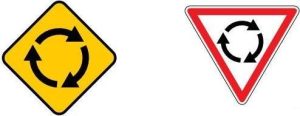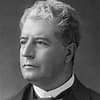
Roundabout rules explained.
There are thousands of roundabouts across Australia and frequent drivers would probably meet one every day. But, as common as they are, roundabout road rules are often misunderstood. Motorists should know what a roundabout is, what they’re for and the road rules that govern their use. So have a read of the below to refresh your understanding.
Roundabouts manage the traffic flow at intersections. They move traffic in one direction around a central island. Vehicles can turn left or right, go straight ahead, or make a full turn (U-turn). Part 9 of the Road Rules 2014 details the legislation that covers roundabouts. Reg 114 explains how to give way when entering or driving in a roundabout, and reg 118 outlines indicating when leaving a roundabout. The road rules do not change depending on the size of the roundabout.
The basic rules to remember.
The roundabout sign means Slow Down, prepare to Give Way and if necessary, stop to avoid a collision.
- When approaching a roundabout, you must get into the correct lane, indicate if turning, and give way to traffic already on the roundabout.
- Enter the roundabout when there is a safe gap in the traffic.
- If you need to change lanes, you must indicate and give way to any vehicle in the lane you’re moving into. You can only change lanes where there’s a broken white line. You must not change lanes if the line is unbroken.
- When exiting a roundabout, whether you are turning left, right or straight ahead, you must always indicate a left turn just before you exit, if practicable.
- Look out for bicycles on a roundabout. They are entitled to use a full lane. Bicycle riders must follow the same rules as other drivers on roundabouts. However, on a multi-lane roundabout, they can use the left lane to turn right. When turning, they must give way to vehicles leaving the roundabout. Look out for bicycles stopped in the left lane who are giving way to vehicles leaving the roundabout.
Giving way when entering or driving in a roundabout
- A driver entering a roundabout must give way to:
(a) any vehicle in the roundabout, and
(b) a tram that is entering or approaching the roundabout.
For this rule, give way means the driver must slow down and, if necessary, stop to avoid a collision. There is no specific legislation stating one must give way to the other if entering the roundabout at the same time, only that you must give way to any vehicle already in the roundabout.
However, common sense must prevail. As the rule states, a driver must slow down enough to be able to stop to avoid a collision if necessary. Many drivers enter and approach roundabouts too fast and if there was a collision and it was a result of them not slowing to be able to avoid a collision, then they may face penalties from the authorities.
Roundabout risks to watch for:
- Take extra care whenever you drive in a roundabout.
- Keep an eye out for cars that are leaving the roundabout.
- Be careful if changing lanes in a roundabout, particularly when leaving.
- Look out for vehicles that are making a full turn.
- Watch for pedestrians, bicycles, long vehicles and motorcycles.





Ahh, roundabouts. As an ex-police officer with a couple of years riding a traffic branch motorcycle (Tasmania) and 5 years in a traffic accident investigation squad (Brisbane), I’ve had a long-term interest in traffic control and management, especially the Manual of Uniform Traffic Control Devices. The AS1742 MUTCD is Queensland and Australia’s traffic control standard.
I’ve travelled extensively and lived in the United Arab Emirates for three years. One thing I noticed is that in the UK, roundabouts are often painted on intersections. Literally. It often resolves a traffic challenge overnight, whereas in Australia we seem to take months or years to accept that a roundabout would be useful before implementing it at usually enormous cost.
Even the rubberised circular materials that are nailed to the road and filled with concrete are useful at intersections where traffic flow could be improved and I know numbers of intersections where safety and traffic flow could be improved at minimal cost with such a structure and a few signs.
In the UAE, it’s a left hand drive country and negotiating roundabouts was a constant challenge as there were no published road rules and the national drivers there tend to race everywhere. Nobody indicates so you have no idea what your fellow travellers are doing.
The aspect I find most annoying is the person who is driving in the opposite direction to me, indicates to turn right and goes straight ahead. I see it every day.
If used correctly, roundabouts are excellent for traffic flow and increasing intersection safety.